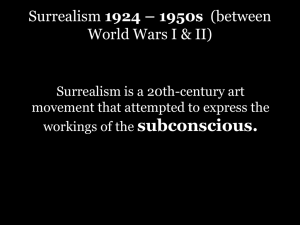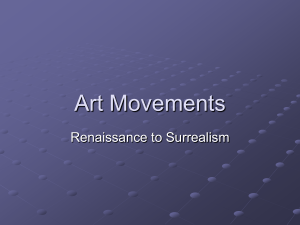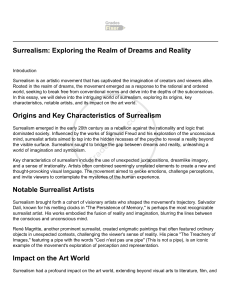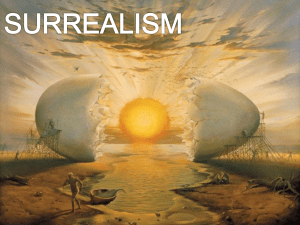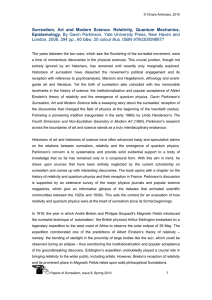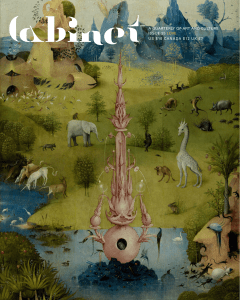Surrealism By Andrew Lemmon
advertisement
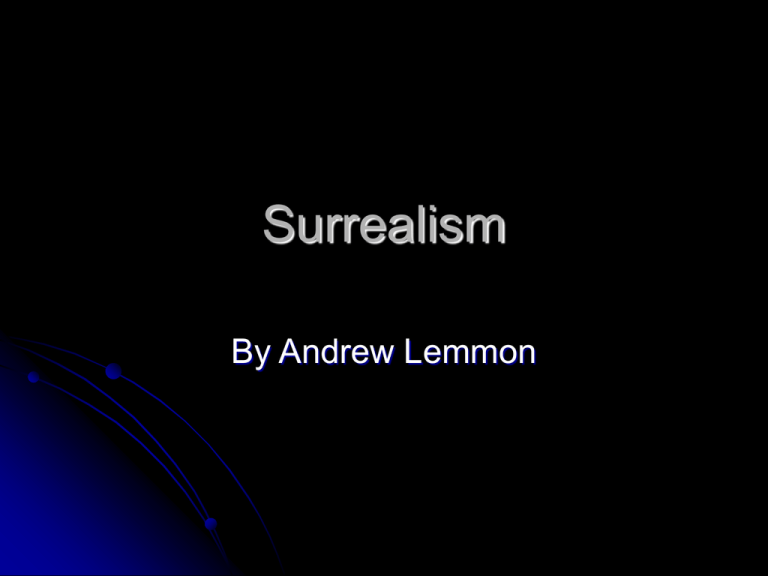
Surrealism By Andrew Lemmon Definition Surrealism is a movement stating that the liberation of our mind, and subsequently the liberation of the individual self and society, can be achieved by exercising the imaginative faculties of the "unconscious mind" to the attainment of a dream-like state different from, or ultimately ‘truer’ than, everyday reality. Source: www.wikipedia.org The history Surrealism finds its beginnings with Dada and Cubism. Hopes to inflame human emotion via images. In the 1930’s, Dali and Magritte became famous. Example of Dali Dali’s The Persistence of Memory - 1931 Development of Surrealism WWII was damaging to the movement, but artists still continued to explore new techniques. American artists such as Mark Rothko took an interest in Surrealist techniques. The Philosophy Adherents to Surrealism thought that the antidote to the horrors of WWI such as the Industrial Revolution was the irrational dream-state of surrealism. Surrealism tends to be fanciful and imaginitive.
